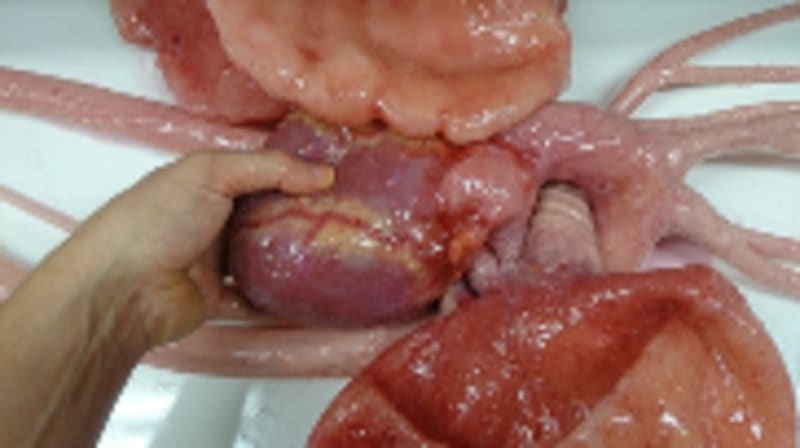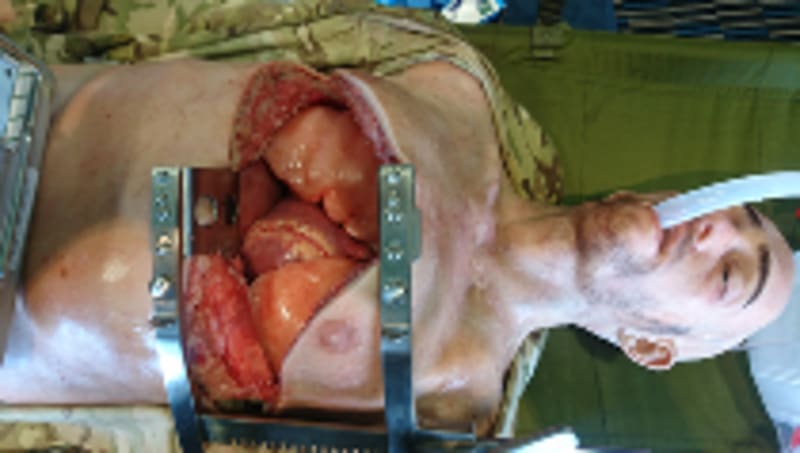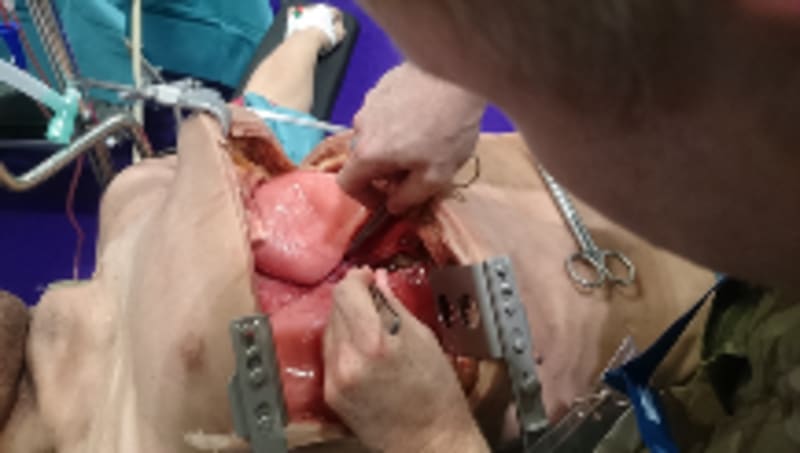How it works: The Simbodie PRO is an operable, artificial ‘patient’ that provides medical educators with a high fidelity, adaptable, safe, tether-less full-body manikin that can deliver surgical training opportunities in austere emergency training environments. The Simbodie PRO can be cut open, operated on and sutured back together again, all using standard surgical equipment and is capable of recreating psychologically immersive surgical scenarios and invasive treatments, previously only seen in emergency situations and on the operating table during live surgery.
What makes our idea novel: Our synthetic living patient, the ‘Simbodie PRO’, was created by an interdisciplinary research and development team including designers, scientists, clinicians and surgeons from across the UK. To create these surrogates we used medical imaging CT data of living patients, 3D reconstruction software (Mimics IS), High-definition 3D printing and cutting-edge post-processing techniques using synthetic viscoelastic gels and fibres tuned to reflect the varying palpability or each soft tissue type, just like the living patient. Our early prototypes have been validated by the Royal College of Surgeons (London) who presented this work with the ‘Transforming Surgical Education Award 2017.’
The latest prototype has fully reparable thoracic detailing and includes a beating heart (with pericardium), inflatable lungs, functional airway/epiglottis/oesophageal tracts, drug delivery options via vessels and bone and is able to be adapted for artificial blood delivery to any region of interest. It even has realistic fluids, vasculature, thoracic skeleton with a replaceable sternum and detailed skin, fat and subcutaneous tissues, all represented in full-color.
How it would be produced?: Design for manufacture has been at the core of development from day one. With this design ethos, the time taken from conception (TRL1) to final prototype testing in the actual user environments and manufacture (TRL8-9) has taken just under 3 years. Multiple elements are manufactured quickly using modified, industry standard soft-tooling techniques and assembled in modular fashion, largely by hand. This work has now been successfully licensed to a British Manufacturer with a production release date set for later this year.
How it could be applied?: This is a global innovation in medical education with potential to have a hugely meaningful impact on society. Improving clinical competency and operative outcomes without endangering patients are immediate benefits of application. Successful user trials with the military, air ambulance and emergency trauma departments have led to many peripheral improvements in application. Other benefits include; implantable device development, remote/robotic surgery training surrogates, impact safety equipment design (ballistics, sports and automotive). In addition, important ethical and religious taboos are simply mitigated using our synthetic patients.
Video
Like this entry?
-
About the Entrant
- Name:Richard Arm
- Type of entry:teamTeam members:Richard Arm
Linzi Foxcroft - Software used for this entry:Mimics Innovation Suite, Materialise
- Patent status:none








